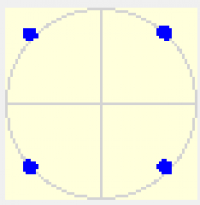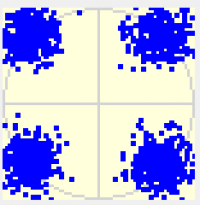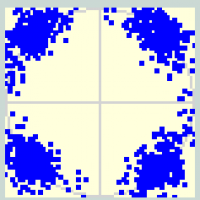Multimedia High Speed Modem
FAQ:
Introduction:
Installation:
Connections:
User Interface GUI:
Live Data Streaming:
TRX Settings:
using SDR Console:
Technical Specification
for Developers
References:
FAQ:
Introduction:
Installation:
Connections:
User Interface GUI:
Live Data Streaming:
TRX Settings:
using SDR Console:
Technical Specification
for Developers
References:
In order to be able to transmit high bit rates, good linearity and a perfect phase response are required. Devices with integrated sound cards, which have been available from all well-known manufacturers for years, work optimally. A connection via the normal microphone socket of older transceivers will only work at the lower transmission rates because of the internal speech filters. SDR transceivers like ADALM Pluto or LimeSDR work very well.
Filters, speech processors, noise blankers (NB) or noise reduction functions (NR) must must always be switched off.
The constellation diagram can be used to assess the reception quality. A too weak, noisy signal can be recognized by diffusely distributed pixels. However, if it stretches the pixels, the phase information is disturbed, e.g. by phase jitter in the received signal. On QO-100 this can be caused by the use of an impure GPS reference in the transmitter or receiver. This is also the reason why an OCXO is recommended instead of GPS for DVB-S2 operation (which is also QPSK modulated). The effects mentioned are shown in the following constellation diagrams using the example of a QPSK-4410 signal.
 Optimum constellation diagram for SNR >40 dB
Optimum constellation diagram for SNR >40 dB
 Figure 2b: Constellation diagram via QO-100 at SNR 15 dB
Figure 2b: Constellation diagram via QO-100 at SNR 15 dB
 Figure 2c: Constellation diagram with jitter of the LNB reference frequency
Figure 2c: Constellation diagram with jitter of the LNB reference frequency